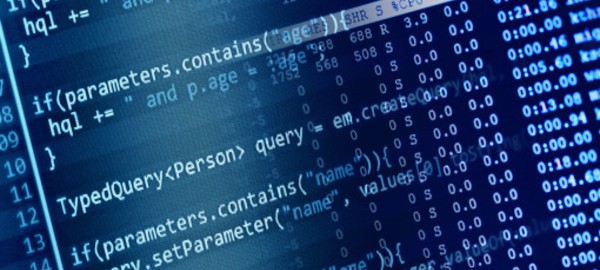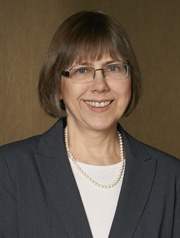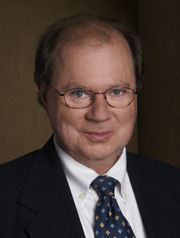There has been much negative publicity about patenting computer-implemented inventions since the U.S. Supreme Court’s decision in Alice Corp. v CLS Bank Int’l (573 U.S. __ (2014)). In Alice, the Court struck down claims directed to a computer-implemented business method as not being eligible for a patent. The Supreme Court has long recognized that laws of nature, natural phenomena, and abstract ideas are not patent eligible. A major concern of the Court is that the claims not preempt others from using “basic tools of scientific and technological work.” (Association for Molecular Pathology v. Myriad Genetics 569 U.S., __ (2013)). The Court in Myriad set forth a two-step analysis to find in the claims an “inventive concept,” described as “an element or combination of elements that is ‘sufficient to ensure that the patent in practice amounts to significantly more than a patent upon the [ineligible concept] itself.’”
The claims at issue in Alice involved what the Court described as “the abstract idea of intermediated settlement.” The Court relied on a treatise from 1896 to support its conclusion that the concept of intermediated settlement was a long-standing and fundamental economic practice. Providing little guidance, however, the Court stated: “In any event, we need not labor to delimit the precise contours of the ‘abstract ideas’ category in this case.”
The Court gave only two useful clues to define an “inventive concept” that is “significantly more” than an abstract idea. These clues are that the claims at issue in Alice do not “purport to improve the functioning of the computer itself” or “effect an improvement in any other technology or technical field.” The goal of this article is to provide more useful clues as to which computer-implemented inventions are patent eligible and which are not.
Recent Cases Illuminating the Alice Holding
In the aftermath of Alice, many patents directed to computer-implemented inventions have been invalided by district courts, often on motions to dismiss, before any claim construction has occurred. The U.S. Patent and Trademark Office (“USPTO”) also has been rejecting many more claims as patent ineligible in the wake of Alice. It will take quite a while before decisions of the district courts and the USPTO make their way to the Federal Circuit, from whom we can only hope for greater predictability. Nevertheless, there are already some cases at the district court level, and one by the Federal Circuit, in which patents have survived Alice determinations. These cases provide useful insights to guide ongoing patent preparation.
DDR Holdings, LLC v. Hotels.com L.P., No. 2013-1505 (Fed. Cir. 2014)
DDR Holdings involved claims directed to “generating a composite web page that combines certain visual elements of a ‘host’ website with content of a third-party merchant.” In attempting to determine whether an abstract idea was being claimed, the Federal Circuit listed some principles set forth by the Supreme Court: “We know that mathematical algorithms, including those executed on a generic computer, are abstract ideas. … We know that some fundamental economic and conventional business practices are also abstract ideas.“ The Federal Circuit listed a number of specific cases in which the claims were not patent eligible, all of which fall into the “business method” category. Concerning these cases, the Federal Circuit stated: “Although many of the claims recited various computer hardware elements, these claims in substance were directed to nothing more than the performance of an abstract business practice on the Internet or using a conventional computer. Such claims are not patent eligible.”
Turning to the claims at issue in DDR Holdings, the court noted that the claims did not include “a mathematical algorithm or a fundamental economic or longstanding commercial practice.” Importantly, the court stated: “Although the claims address a business challenge (retaining website visitors), it is a challenge particular to the Internet.” The court continued: “[T]hese claims stand apart because they do not merely recite the performance of some business practice known from the pre-Internet world along with the requirement to perform it on the Internet. Instead, the claimed solution is necessarily rooted in computer technology in order to overcome a problem specifically arising in the realm of computer networks.”
The court cautioned that “not all claims purporting to address Internet-centric challenges are eligible for patent.” However, the claims that survived the patent eligibility challenge in DDR Holdings “specify how interactions with the Internet are manipulated to yield a desired result—a result that overrides the routine and conventional sequence of events ordinarily triggered by the click of a hyperlink.” These claims also do not preempt “every application of the idea of increasing sales by making two web pages look the same.”
Autoform Engineering GmbH v. Engineering Technology Associates, Inc., Case No. 10-14141 (E.D. Mich. 2014)
The claims related to software used to design tools for forming sheet metal parts.he defendant had alleged that the claims were directed to merely performing a mental process. However, in denying a motion for summary judgment, the court listed a number of limitations in the claims that narrowed the scope of the patent away from covering merely an abstract idea or reciting a mental process In particular, the court observed the following claim limitations as examples of specific features that were not mere mental steps: (1) smoothing an irregular component edge; (2) filling in a fill surface; (3) forming a smooth component edge; (4) where the fill surface runs into the predefined component geometry by a continuous tangent; (5) arranging sectional profiles along the smooth component edge; (6) avoiding an overlap or intersection condition between sectional profiles; (7) parameterizing the sectional profiles by the means of profile parameters; (8) the profile parameters being scalar values; (9) laterally interconnecting the sectional profiles by a continuous surface to form the geometry of the addendum zone of the tool; and (10) where the addendum zone complements the component geometry in the edge zone and runs into the component and the binder with a continuous tangent. Because of these claim features, the patent in question was found to cover more than merely an abstract idea.
Helios Software, LLC and Pearl Software, Inc., v. Spectorsoft Corporation, C.A. No. 12-081-LPS (D.Del. 2014)
The claims in question were directed to “remotely monitoring data associated with an Internet session and controlling network access.” The court upheld the patent eligibility of the claims, noting that no evidence was provided to show that the claims at issue were fundamental truths or principles that would preempt basic tools of research. The court pointed out that the defendant had failed to prove that the remote monitoring of data and controlling network access were “fundamental to the ubiquitous use of the Internet or computers generally.” The court also found that the claims satisfied the “machine or transformation test” because of meaningful limitations recited in the claims, including exchanging data over different Internet sessions to capture the content of an ongoing Internet communication session (i.e., real-time data capture and transmission). It was important to the court’s decision that a human alone could not perform the claim limitations, because the claimed method was tied to a machine.
Card Verification Solutions, LLC v. Citigroup Inc., No. 13 C 6339 (N.D. Ill. 2014)
The court held that there was a plausible reading of the claims under which they contained eligible subject matter. While the claims were directed to the abstract idea of verifying a transaction, they contained sufficient additional recitations to be considered patent eligible at the motion to dismiss stage. The court noted several relevant features. The claims included a limitation for a pseudorandom number and character generator, and a factual question remained as to whether a human could perform this limitation with pen and paper. By adding a new subset of numbers or characters to data, the claims were directed to more than merely manipulating, reorganizing or collecting data. Even though there was no physical transformation of matter, the claimed invention plausibly produced a concrete effect in the field of electronic communications.
USPTO Guidance and Examples
On December 16, 2014, USPTO published its 2014 Interim Guidance on Patent Subject Matter Eligibility (Fed. Reg. Vol. 79, 74618). The Guidance is based in part on the Alice decision, and lays out an analytical framework for use by patent examiners to determine whether a claim is directed to patent eligible subject matter. According to that framework, the examiner first determines whether a claim is “directed to a judicial exception” such as a law of nature, a natural phenomenon, or an abstract idea (the issue in Alice). Next, the examiner must identify how the judicial exception is recited in the claim. Finally, for method claims (the type most relevant to computer-implemented inventions), the examiner must determine whether or not the claim is directed to “significantly more” than the judicial exception (i.e., whether the claim recites significantly more than merely implementing an abstract idea on a computer). Only if it does is the claim directed to patent eligible subject matter, for purposes of patent examination.
The Guidance provides a number of sample analyses. Example 6 describes the Alice case. In that example, consistent with the Supreme Court holding, USPTO concludes that the claim does not recite significantly more than an abstract idea, because the steps performed are directed to mere electronic recordkeeping (including obtaining data, adjusting account balances, and issuing automated instructions), which is “one of the most basic functions of a computer.” The Guidance also reviews a number of past Supreme Court decisions and recent lower court decisions regarding abstract ideas. The following cases from the USPTO Guidance provided a holding of patent eligibility for computer-implemented inventions.
SiRF Technology v. ITC, 601 F.3d 1319 (Fed. Cir. 2010)
The claims at issue are directed to mathematical calculations of position using data obtained from a GPS receiver and signals generated by at least four satellites. Because the claim recites the use of a GPS receiver, which places a meaningful limit on the scope of the claim and plays a significant part in performing the method, the claim is directed to significantly more than the abstract idea behind the calculations and is patent eligible.
Research Corp. Tech. v. Microsoft Corp., 627 F.3d 859 (Fed. Cir. 2010)
The claims are directed to digital image halftoning, which allow computers to represent images with a limited number of colors or shades of gray. The method involves the use of algorithms and mathematical formulas (i.e., abstract ideas). However, the claims were considered patent eligible because, according to the Guidance, “[t]he invention presents functional and palpable applications in the field of computer technology with specific applications or improvements to technologies in the marketplace.”
Conclusion
Accordingly, when drafting patent applications for computer-implemented methods, some principles to keep in mind are:
- Control the definition of the “inventive concept” so as to include substantially more than computer implementation of an abstract idea
- Ensure that the claims have sufficient specificity to preclude preemption of any relevant abstract idea
- Improve the functioning of a computer itself, if applicable
- Effect an improvement in another technology or technical field, if applicable
- Where possible, draft claims that tie the claimed method to a machine that is more than a general purpose computer.




